PowerPoint 2013 -
Checking Spelling and Grammar

PowerPoint 2013
Checking Spelling and Grammar


/en/powerpoint2013/smartart-graphics/content/
Worried about making mistakes when you type? Don't be. PowerPoint provides you with several proofing features—including the Spelling and Grammar tool—that can help you produce professional, error-free documents.
Optional: Download our practice presentation.
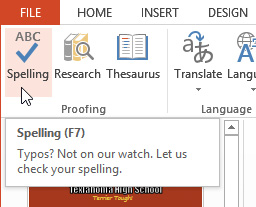 Clicking the Spelling command
Clicking the Spelling command Correcting a spelling error
Correcting a spelling error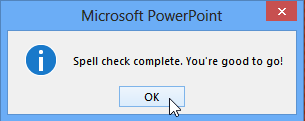 Clicking OK
Clicking OKIf no suggestions are given, you can manually type the correct spelling in your presentation.
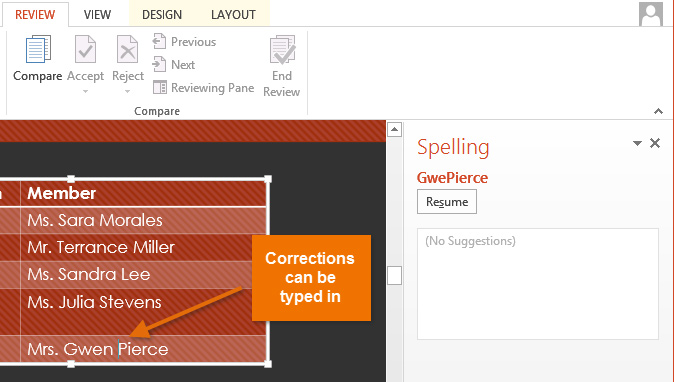 Typing a correction
Typing a correctionThe spell check is not always correct. It will sometimes say something is spelled incorrectly when it's not. This often happens with people's names, which may not be in the dictionary. If PowerPoint says something is an error, you can choose not to change it using one of three options:
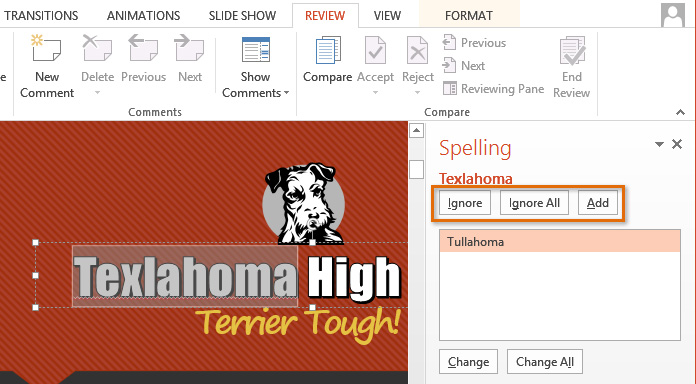 The ignore options
The ignore options
By default, PowerPoint automatically checks your presentation for spelling errors, so you may not even need to run a separate check using the Spelling command. These errors are indicated by red wavy lines.
 Automatic spell check errors
Automatic spell check errors Correcting a spelling error
Correcting a spelling errorYou can also choose to Ignore an underlined word or Add to Dictionary.
PowerPoint allows you to modify its proofing options, giving you more control over how it checks your text. You can customize the automatic spell check to change the way PowerPoint addresses spelling errors. You can also turn on the grammar check option to help you find and correct contextual spelling errors (like their vs. they're). PowerPoint will not notice other types of grammar errors, so you'll still need to proofread your presentation to catch all grammatical errors.
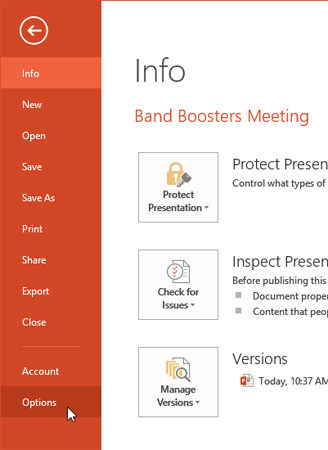 Clicking Options
Clicking Options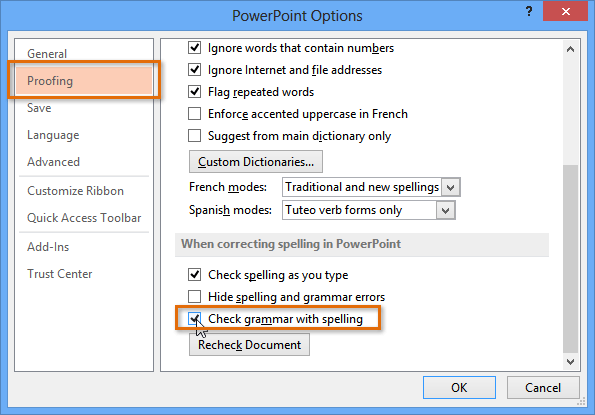 Turning on the grammar check
Turning on the grammar check Clicking the Spelling command
Clicking the Spelling command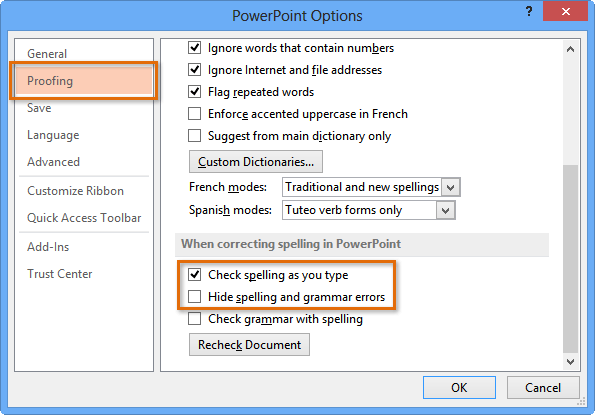 Modifying proofing options
Modifying proofing optionsIf you've turned off the automatic spell check, you can still run a check by going to the Review tab and clicking the Spelling command.
Modifying any settings in PowerPoint Options—including proofing—affects all of PowerPoint, not just your current presentation.
/en/powerpoint2013/reviewing-presentations/content/